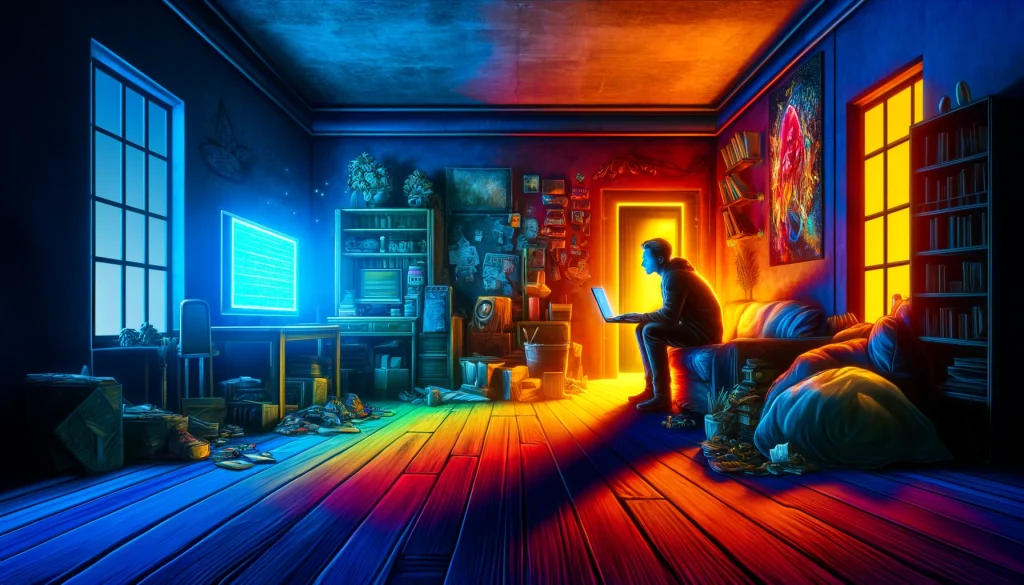
Pornography use is a widespread phenomenon in modern society, facilitated by easy internet access. While it can be a source of entertainment and sexual education for some, for others, excessive consumption may lead to various sexual health concerns, including erectile dysfunction (ED) and low libido. Understanding how pornography might be linked to these issues can help people make informed choices about their consumption habits.
Erectile dysfunction, commonly referred to as ED, is characterised by difficulty achieving or maintaining an erection sufficient for satisfactory sexual performance. Low libido, on the other hand, is a reduced interest in sexual activity. Both conditions can stem from a variety of physical and psychological factors, including stress, hormonal imbalances, and lifestyle choices.
When talking about pornography and its possible impact on sexual function, it’s crucial to grasp the idea of an ‘arousal template.’ This template is like a pattern of what someone finds sexually attractive. Since pornography is so varied and easily accessible, it can shape or change this pattern. For some people, seeing a lot of sexual images can dull their sensitivity to sexual cues, making it harder to get aroused by things that used to excite them.
Consider Jake, a 29-year-old who began watching pornography during his early teens. Over the years, Jake noticed that he needed to seek out more specific or intense content to achieve the same level of arousal he once felt with less explicit material. This phenomenon, often referred to as tolerance, is like needing more of a substance to achieve the same high in substance addiction. In sexual terms, this could translate into difficulty becoming aroused or maintaining an erection in real-life sexual encounters.
Pornography triggers the release of dopamine, the ‘feel-good’ neurotransmitter, which plays a crucial role in the reward pathway of the brain. Watching pornography can release a lot of dopamine, which sets a high standard for excitement. As a result, real-life interactions may not seem as exciting, causing dissatisfaction in sexual relationships and a reduced sex drive.
Take Oliver, who finds that after prolonged periods of high pornography consumption, his desire to initiate sex with his partner diminishes. He may start to find that ordinary sexual encounters do not stimulate him as much as the scenarios portrayed in pornography, leading to a cycle where only pornographic material provides the necessary stimulation for sexual satisfaction.
The constant and immediate access to pornography can also create unrealistic expectations regarding sex. These expectations can manifest as pressure or anxiety during actual sexual encounters, potentially leading to performance anxiety. Performance anxiety is a significant psychological factor that can contribute to erectile dysfunction. It revolves around the fear of not being able to perform sexually, which can ironically lead to the feared dysfunction itself.
For instance, Alex, a regular viewer of porn, might find himself in a situation where the pressures to perform like the actors seen in pornographic films overwhelm him. This anxiety can impede his natural response to sexual stimulation, leading to erectile difficulties despite having no underlying physical cause.
Excessive consumption of pornography might also impact emotional connections, which are integral to a healthy sexual relationship. If a person uses pornography as a primary means of sexual gratification, it may become challenging to develop or maintain a deep emotional connection with a partner. This disconnect can contribute to low libido, as sexual desire is not purely a physical response; it also involves emotional closeness and intimacy.
Take Nora and Lee, a couple where one partner’s excessive use of pornography has created feelings of neglect and emotional distance in their relationship. This emotional gap can reduce sexual desire because the focus on pornography overshadows the emotional connection between them.
There isn’t a proven cause-and-effect relationship, but excessive pornography use is linked to erectile dysfunction and low libido. This is because pornography can change how people think about sex, affect physical responses, and disrupt emotional connections. Understanding these effects can help those who think their sexual health might be affected. Being aware of these links encourages more careful choices about pornography use, highlighting the importance of moderation.
Struggling with porn addiction? You’re not alone. At My Practice Counselling Melbourne, our accredited specialist Jonathan Riley can help you develop healthier coping mechanisms and build a more fulfilling relationship with intimacy.